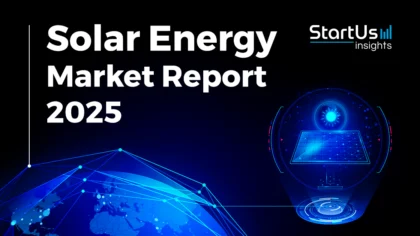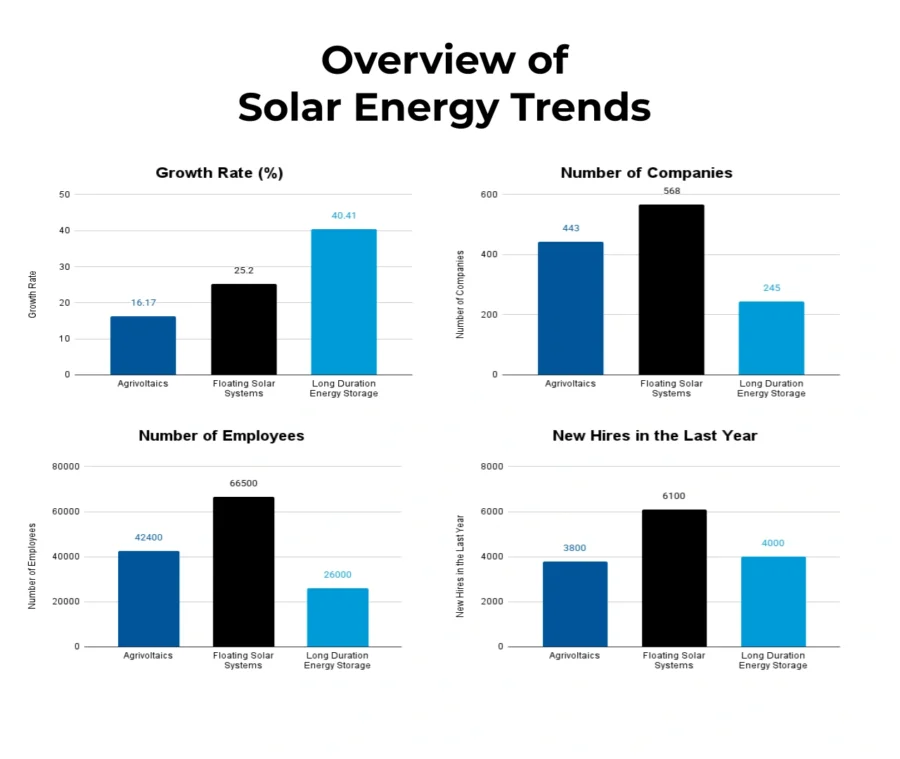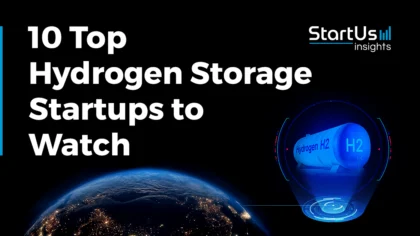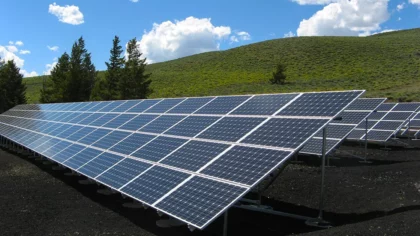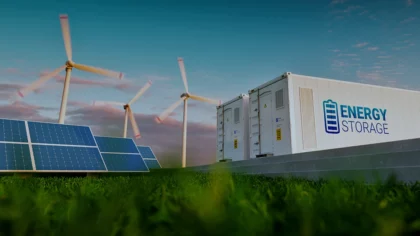The Solar Energy Market Report 2025 provides firmographic, innovation, and investment data to outline the current state of the solar industry. It analyzes the response of solar companies to changing economic conditions, climate policies, and technological developments by adding talent, filing patents, and attracting capital at scale. Moreover, it showcases the influence of major corporate backers and financial institutions.
In addition, this solar energy industry outlook spotlights high‑growth segments like agrivoltaics, floating solar, and long‑duration energy storage. Thus, it offers a concise view of where innovation and investment intersect.
Executive Summary: Solar Energy Market Report 2025
- Industry Growth Overview: The solar energy sector expanded 3.13 % last year, as per our platform data. This reflects durable momentum despite macro‑economic volatility.
- Manpower & Employment Growth: Solar companies added 457 500 jobs in the last year and reached 8.9 million workers.
- Patents & Grants: Companies filed 531 200+ solar‑related patents from 184 500+ applicants. There is a 6.16 % annual increase. Also, the sector secured 7082 grants.
- Global Footprint: Major hubs include the USA, Germany, India, the UK, and China, while Shenzhen, London, Melbourne, Sydney, and New York City emerge as the top city ecosystems.
- Investment Landscape: More than 19 800 funding rounds raised an average of USD 68.2 million each from over 13 700 investors. It provided capital to 6155 companies across the solar value chain.
- Top Investors: Some of the top investors include KKR, Rabobank, European Investment Bank, Goldman Sachs, and BlackRock. They collectively deployed more than USD 35.9 billion.
- Startup Ecosystem: Five startups in this sector such as Vaja (Wind-Adaptive Solar Farms), Popular Power (Solar-Site Monitoring Platform), Groner (solar energy customer relationship management (CRM) platform), Solhyd (Hydrogen Producing Solar Panel), and Heliosteam (Solar Steam Production) showcase the sector’s global reach and entrepreneurial spirit.
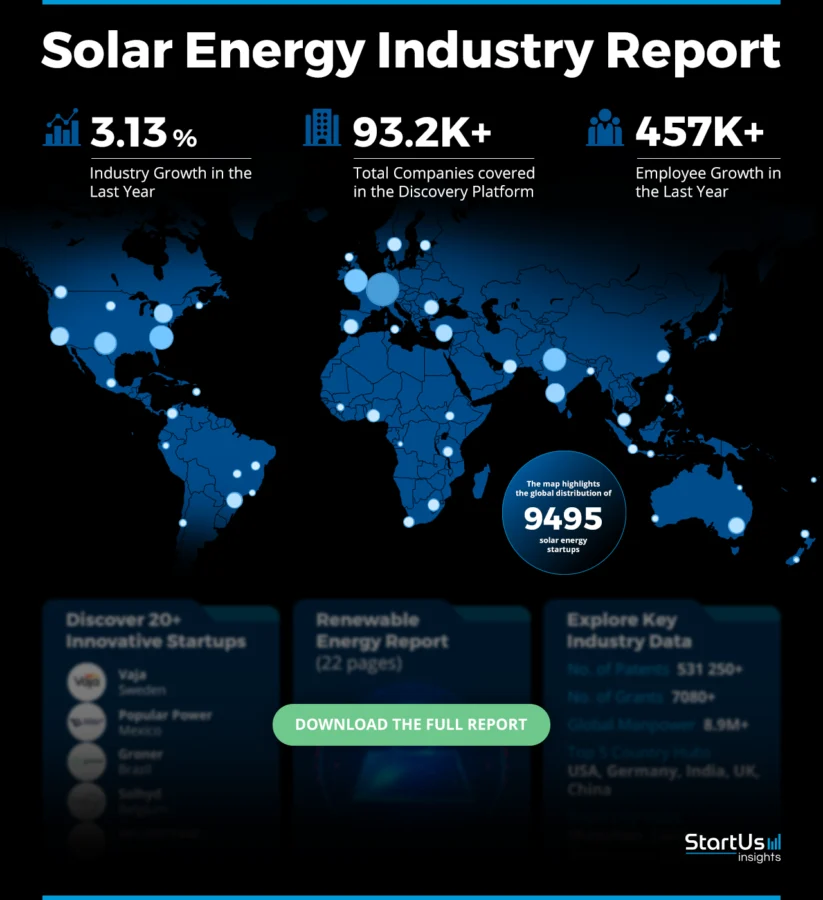
Methodology: How we created this Solar Energy Industry Report
This report is based on proprietary data from our AI-powered StartUs Insights Discovery Platform, which tracks 7 million global companies, 20K+ technologies and trends as well as 150M patents, news articles and market reports. This data includes detailed firmographic insights into approximately 7 million startups, scaleups, and tech companies. Leveraging this exhaustive database, we provide actionable insights for startup scouting, trend discovery, and technology landscaping.
For this report, we focused on the evolution of solar energy over the past 5 years, utilizing our platform’s trend intelligence feature. Key data points analyzed include:
- Total Companies working in the sector
- News Coverage and Annual Growth
- Market Maturity and Patents
- Global Search Volume & Growth
- Funding Activity and Top Countries
- Subtrends within solar energy
Our data is refreshed regularly, enabling trend comparisons for deeper insights into their relative impact and importance.
Additionally, we reviewed trusted external resources to supplement our findings with broader market data and predictions, ensuring a reliable and comprehensive overview of the solar energy market.
What Data is used to create this Solar Energy Market Report?
Based on data provided by the StartUs Insights Discovery Platform, we observe that the solar energy market stands out in the following categories relative to the 20K+ technologies and trends we track.
These categories provide a comprehensive overview of the market’s key metrics and inform the future direction of the market.
- News Coverage & Publications: The solar energy industry saw over 175 074 news articles and publications in the past year.
- Funding Rounds: Our database records more than 19 800 funding rounds.
- Manpower: It employs more than 8.9 million people and added 457 500 new workers last year.
- Patents: The industry holds 531 256 patents that indicate research, innovation, and intellectual property activity.
- Grants: It received 7082 grants globally.
- Yearly Global Search Growth: Year-over-year (YoY), the industry experienced 8.4% growth in global search interest.
Explore the Data-driven Solar Energy Outlook for 2025
This heatmap offers insight into the geographical distribution of growth, manpower, and innovation across the evolving solar energy ecosystem. It includes 93,234 companies and 9,495 startups globally across major innovation hubs.
The renewable energy workforce grew by 18% over the past year, increasing from 13.7 million to 16.2 million. Within this, the solar energy sector added 457 500 jobs, bringing its total workforce to 8.9 million. In addition, the industry recorded 531 256 patent filings and received 7082 grants globally.
Based on our data, the sector recorded 3.13% growth over the last year, with activity concentrated in cities like Shenzhen, London, Melbourne, Sydney, and New York City.
The USA, Germany, India, the UK, and China lead the solar sector in terms of country-level innovation.
A Snapshot of the Global Solar Energy Market
The solar energy sector maintained 3.13% annual growth despite evolving economic changes and global priorities around clean‑energy investment and climate policy targets.
Projections suggest a CAGR of 6.5% through 2031 that highlight the sector’s long-term expansion potential.
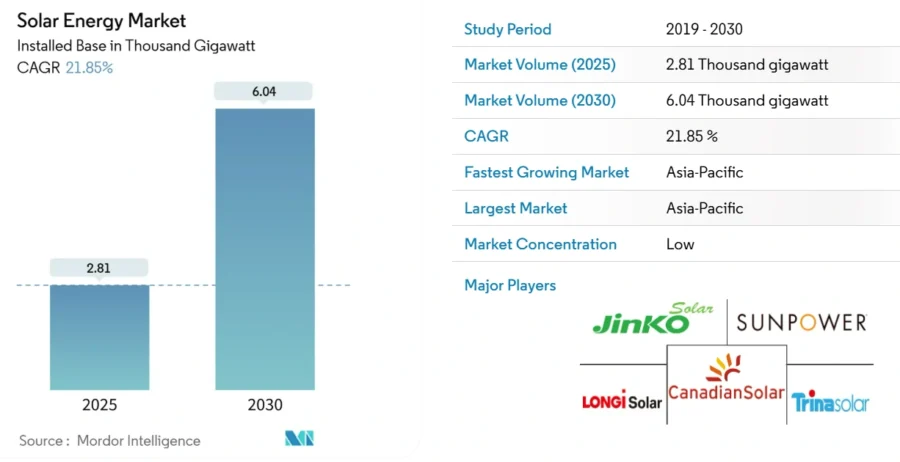
Credit: Mordor Intelligence
The industry includes 9495 active solar startups, with 1980 classified as early‑stage ventures, while 2710 companies completed mergers and acquisitions (M&A).
Patent activity remains strong with 531 256 companies filing for patents from 184 588 applicants. This showed a 6.16% yearly growth. Additionally, China leads global solar patent issuance. In 2020 alone, solar energy led all renewables with 33 901 patent filings.
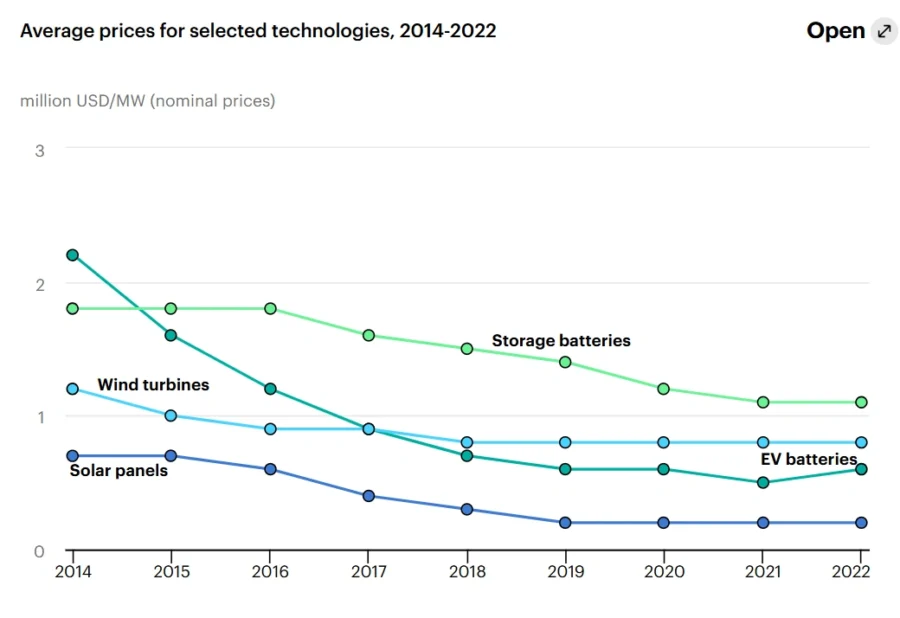
Credit: IEA
Between 2014 and 2022, the average price of solar panels dropped from around USD 0.7 million per megawatt (MW) in 2014 to just over USD 0.3 million/MW in 2022. This represents one of the steepest cost declines among all clean energy technologies. It has made solar significantly more affordable and positioned it as a key driver of global renewable energy adoption and investment.
Explore the Funding Landscape of the Solar Energy Market
With over 19 841 funding rounds closed, investment activity in the solar energy sector shows the global energy transition. The average investment per round stands at USD 68.2 million, with capital flowing into both early innovations and mature solar ventures.
Between the first quarter of 2018 and the second quarter of 2022, global investment in solar energy technology showed steady growth with some quarterly fluctuations. Investments began at around USD 36 billion in early 2018 and briefly dipped to USD 31 billion in Q2 2019.
Momentum picked up in 2020, rising from USD 38 billion in Q2 to USD 56 billion by Q4. A surge occurred in Q4 2021, when investment peaked at USD 88 billion to highlight the growing global commitment to solar energy.
While funding slightly declined afterward, it remained at USD 61 billion invested in Q1 2022 and USD 59 billion in Q2 2022. This continued high level of investment highlights the increasing importance of solar technology in the global energy transition.
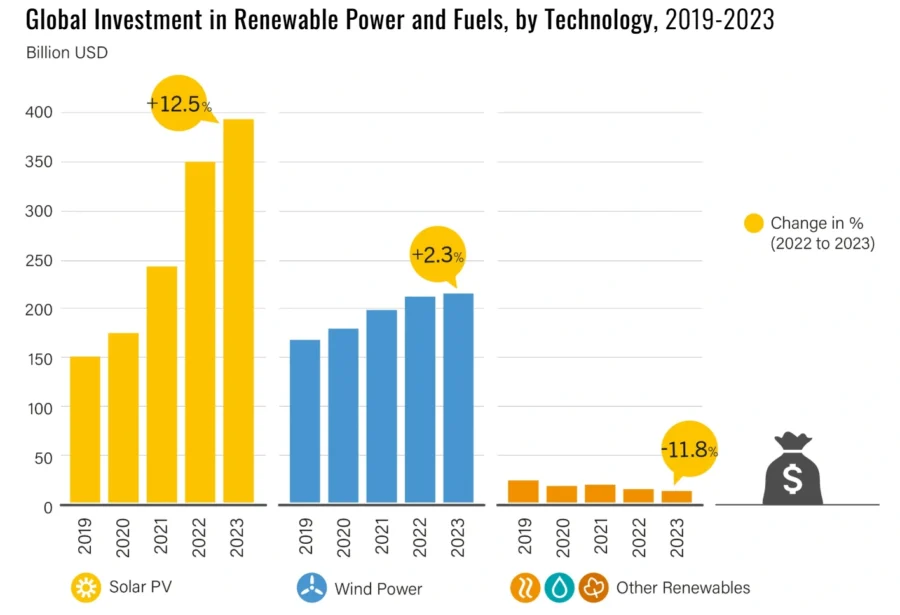
Credit: REN21
In 2023, solar photovoltaic (PV) accounted for 63% of total funding in the renewable energy sector. Solar PV investment rose by 12.5%, reaching USD 392.7 billion. Nearly 47.4% of this investment, around USD 186.2 billion, came from China. In the United States, solar PV investment increased by 41.2% to USD 50.6 billion.
Meanwhile, Europe saw better solar investments, with countries like Germany and Spain increasing their contributions. India recorded USD 7.9 billion in solar PV investment despite a 17.7% decline caused by policy uncertainty and infrastructure challenges. In Asia-Oceania (excluding China and India), solar PV investment dipped slightly by 1.2% to USD 29.3 billion. In Brazil, solar investment remained at USD 19.7 billion.
More than 13 700 investors contributed to the sector’s growth trajectory. It includes a mix of early-stage venture capital firms, institutional investors, and corporate backers.
Funding has reached over 6155 companies that support activities including R&D, manufacturing scale-up, and project deployment. This sustained financial engagement highlights the industry’s appeal to diverse investor profiles and the scale of clean energy solutions.
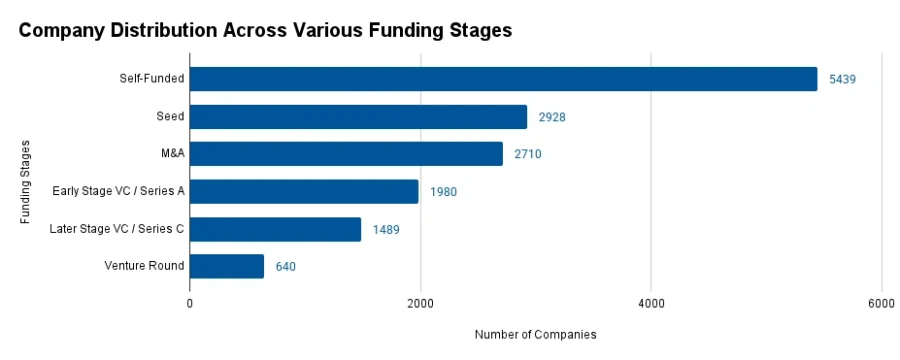
As technological changes and policy reforms align globally, investor interest in solar energy leads to consistent capital inflow across all stages of the value chain.
Who is Investing in the Solar Energy Market?
The top investors in the solar energy industry have collectively committed over USD 35 billion. This reflects sustained confidence in the sector’s commercial viability and long-term growth potential.
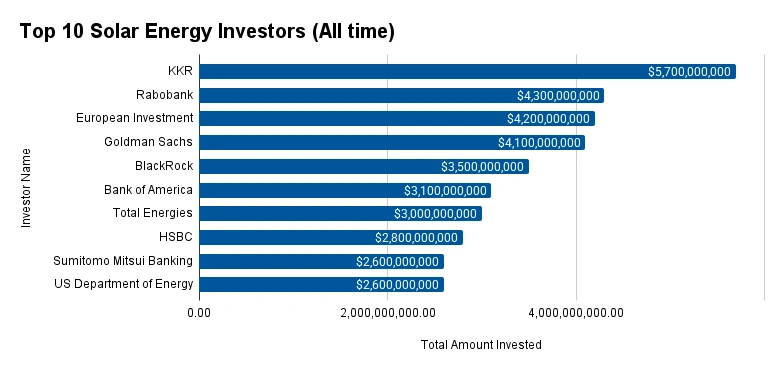
- KKR invested USD 5.7 billion across 18 companies.
- Rabobank funded 32 companies with a total investment of USD 4.3 billion.
- The European Investment Bank backed 43 companies by investing a total of USD 4.2 billion to advance renewable energy infrastructure across key European markets.
- Goldman Sachs allocated USD 4.1 billion to 30 companies. It also offered a targeted loan of USD 30 million for a clean energy impact investment firm to improve solar access in underserved US communities.
- BlackRock invested USD 3.5 billion across 20 companies. It recently increased its climate infrastructure efforts, including a USD 500 million stake in a solar developer with a 26 GW project pipeline.
- Bank of America deployed USD 3.1 billion across 22 companies.
- TotalEnergies contributed USD 3 billion to 9 companies.
- HSBC invested USD 2.8 billion in 25 companies through its global banking network and sustainability-linked lending programs.
- Sumitomo Mitsui Banking Corporation supported 22 companies with USD 2.6 billion in investments for funding solar infrastructure and clean technology ventures, particularly in Asia.
- The US Department of Energy backed 18 companies with USD 2.6 billion in grants and financing programs for domestic solar manufacturing and innovation initiatives.
Top Solar Energy Innovations & Trends
Discover the emerging trends in the solar energy market along with their firmographic details:
- Agrivoltaic: With 443 companies active in this space, agrivoltaics combines agriculture and solar power generation. The sector currently employs 42 400 people by adding 3800 new roles in the past year. An annual trend growth rate of 16.17% suggests growing interest in land-efficient renewable deployment strategies, especially in regions with agricultural constraints or land-use conflicts.
- Floating Solar Systems: The sector encompasses a total of 568 companies, employs 66 500 professionals, and added 6100 new hires last year. Floating solar offers a viable alternative to land-based installations in water-scarce or densely populated areas. With a 25.20% annual growth rate, the segment expands with technological changes and infrastructure investment.
- Long Duration Energy Storage (LDES): While smaller in scale with 245 companies, LDES grows 40.41% annually. This highlights its strategic role in supporting grid stability and energy reliability. The domain employs 26 000 workers, 4000 of whom joined in the past year. As solar adoption rises, the demand beyond traditional lithium-ion solutions increases.
5 Top Examples from 9400+ Innovative Solar Energy Startups
The five innovative startups showcased below are picked based on data including the trend they operate within and their relevance, founding year, funding status, and more. Book a demo to find promising startups, emerging trends, or industry data specific to your company’s needs and objectives.
Vaja builds Wind-Adaptive Solar Farms
Swedish startup Vaja develops wind-adaptive solar tracking and mounting systems that assist solar panels in moving with the wind. These systems use hinges and flexible joints so the panels pivot like leaves and reduce the force of strong winds. This design reduces the need for heavy steel and concrete, speeds up installation, and makes it easier to set up solar farms in coastal or storm-prone areas.
With the technology’s testing in wind tunnels and real hurricane conditions, it prevents issues like twisting damage. Thus, it lowers costs and keeps solar systems running during extreme weather.
Popular Power develops a Solar-Site Monitoring Platform
Mexican startup Popular Power offers a software platform for monitoring solar sites. It combines real-time data from different inverter systems to show metrics like installed capacity, energy generation, performance, and revenue on one dashboard. The platform prioritizes alerts based on the money or downtime the systems cause, assigns tasks to technicians, and keeps a record of all actions taken.
Also, the platform creates automated customer reports that include generation, usage, weather, and pricing data. With role-based access, developers, investors, and customers view shared sites. This increases system uptime, cuts operational costs, and aids in better portfolio management.
Groner provides a Solar Energy CRM Platform
Brazilian startup Groner develops a solar CRM platform that centralizes sales, installation, finance, and service processes. It connects customer interactions, saves documents and images in custom fields, and tracks each step of the workflow.
The platform’s dashboards show live updates on sales pipelines and team performance to support quick decisions. Further, the platform includes automated alerts, lead follow-ups, and an AI assistant that chats with leads and writes proposals. This automates repetitive tasks, improves lead tracking, and organizes data in a single system.
Solhyd offers a Hydrogen-producing Solar Panel
Belgian startup Solhyd builds hydrogen panels that use solar energy to generate hydrogen gas instead of electricity. These devices connect through gas tubes rather than electric cables. As air flows into the panel, the startup’s system captures moisture from the atmosphere.
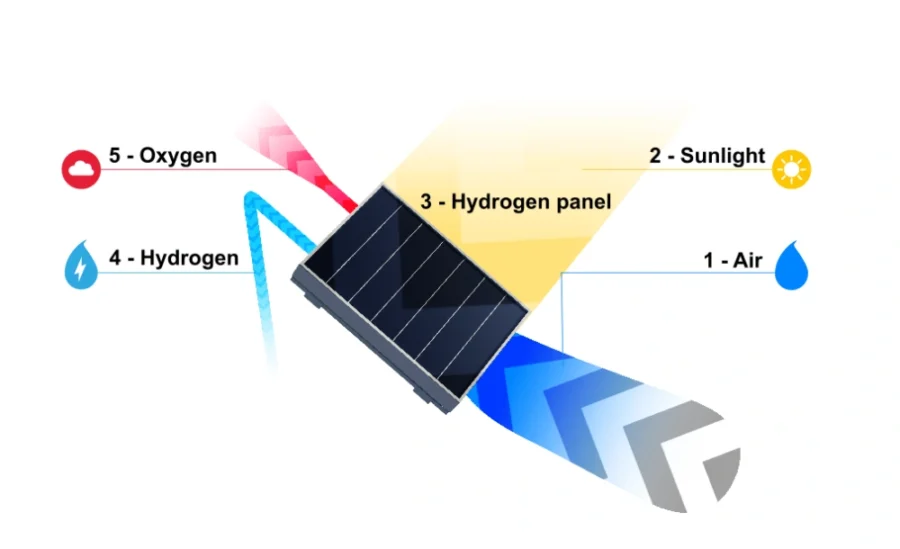
At the same time, sunlight provides the energy to split water molecules into hydrogen and oxygen using low-cost, abundant materials instead of precious metals. Hydrogen flows out through a low-pressure outlet, which is ready for direct use, storage under pressure, or pipeline transport, while oxygen is released into the air. This way, the Solhyd enables clean hydrogen production using only air and sunlight.
Heliosteam produces Solar Steam
Turkish startup Heliosteam provides concentrated solar thermal fields that use custom-designed heliostats for generating superheated steam. The startup’s system moves concentrated solar energy into a ceramic particle thermal storage unit to produce steam.
The built-in heat exchange loops use heat-transfer fluids and piping to provide steam at industrial pressure. This cuts down fossil fuel use and reduces carbon emissions in industries like food, chemical, and other heat-intensive industries.
Gain Comprehensive Insights into Solar Energy Trends, Startups, and Technologies
The Solar Energy Report 2025 illustrates a sector with steady growth, an expanding workforce, and active investment across diverse market segments. As the industry evolves, it draws support from governments, institutions, and private investors.
The rise of innovative startups and high-growth sub-sectors drives technological progress, flexible deployment models, and integrated energy solutions. With growing policy alignment and industry commitment, growing solar energy adoption showcases a global shift toward cleaner, more resilient energy systems.
Get in touch to explore 9400+ startups and scaleups, as well as all market trends impacting solar energy companies.

